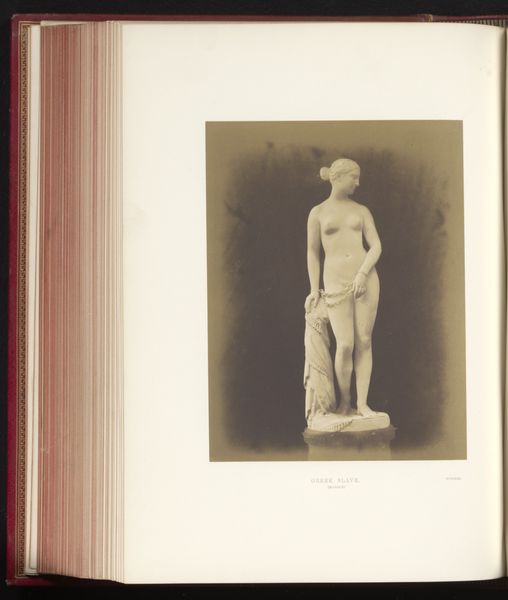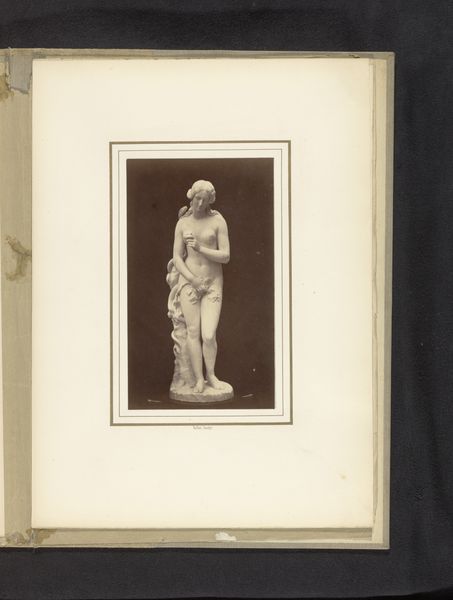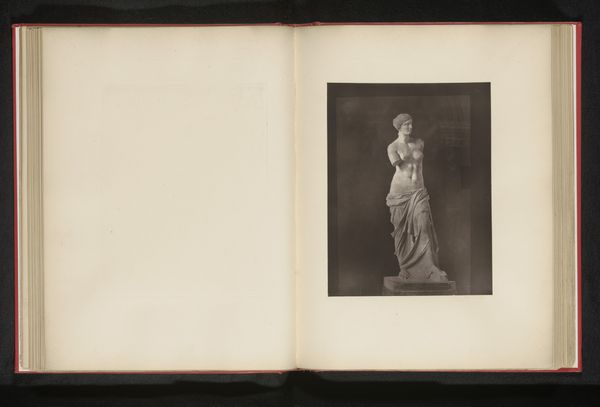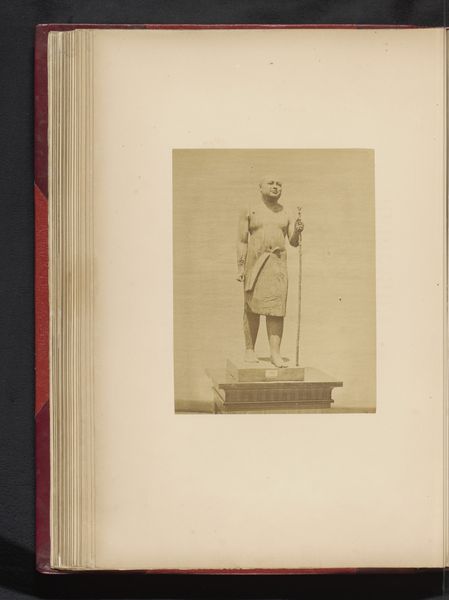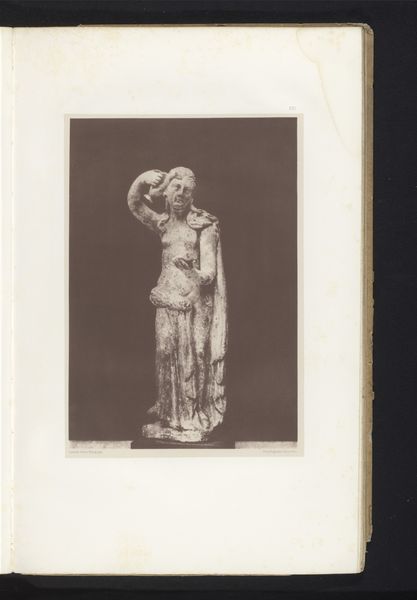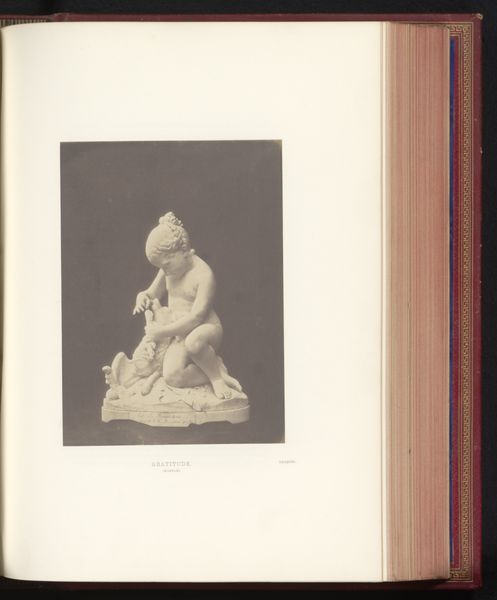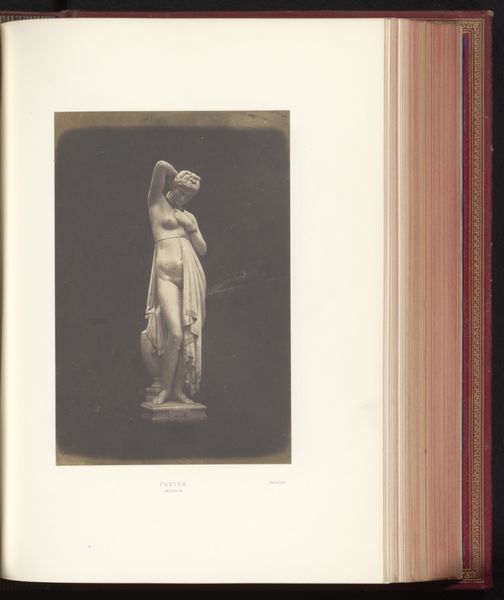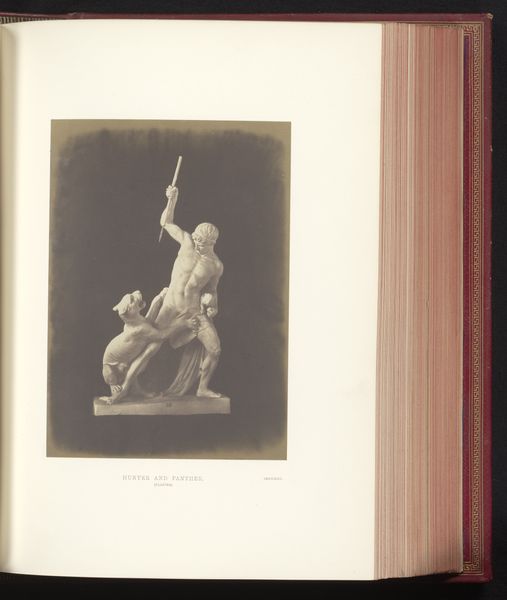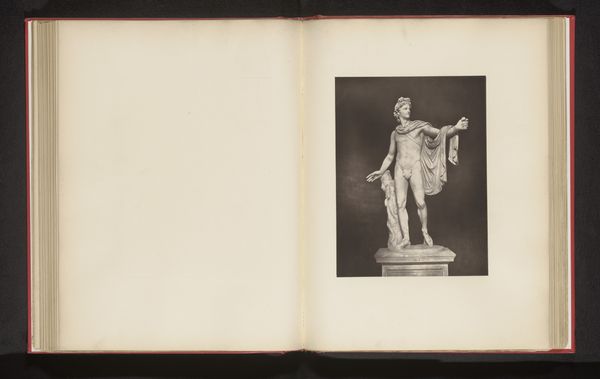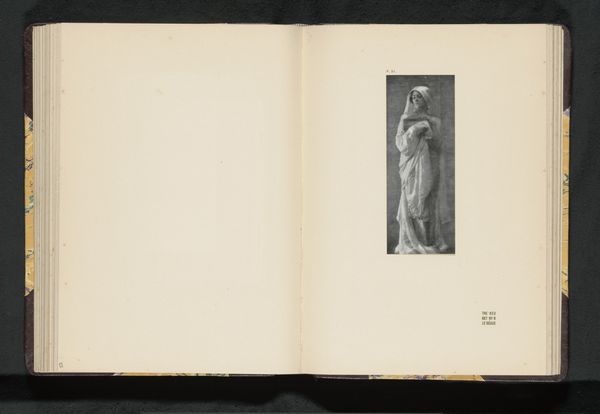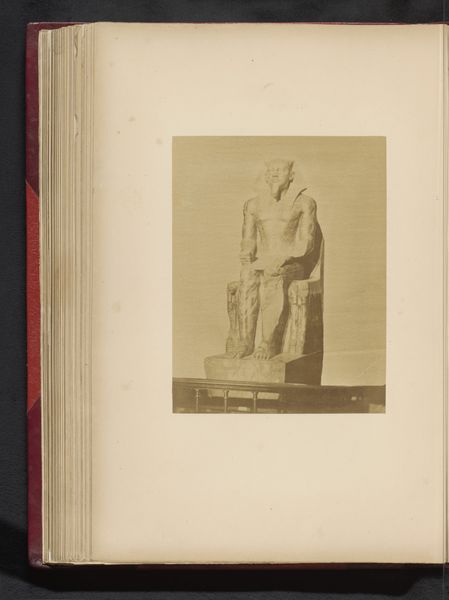
photography, sculpture, gelatin-silver-print
#
ancient-egyptian-art
#
photography
#
sculpture
#
gelatin-silver-print
Dimensions: height 232 mm, width 174 mm
Copyright: Rijks Museum: Open Domain
Editor: This is a photograph titled "Egyptisch standbeeld in het Boulaq Museum in Caïro, Egypte" taken by Hippolyte Délié, sometime before 1871. It’s a gelatin silver print depicting a standing Egyptian sculpture. The tones are soft, almost sepia, which gives it a wonderful sense of age and…almost distance, like looking into the past. What strikes you about it? Curator: What interests me here is the photographic process itself, the gelatin silver print. Think about the labor involved: the mining of silver, the crafting of the photographic materials, the development process… And then think about the museum it depicts. Boulaq, founded to preserve Egyptian antiquities, but also part of a larger colonial project. How were these objects acquired and who profited? Editor: That’s a perspective I hadn’t considered. I was focusing on the sculpture itself, imagining the hands that carved it centuries before. You’re right, the photograph introduces layers of…ownership and control. The photographer, the museum, the colonial context... Curator: Exactly. And the consumption of these images. They circulated, shaping European perceptions of Egypt. This wasn't just about documenting; it was about creating a visual archive intertwined with economic and political power. How do we challenge the traditional boundaries of "art" when it comes to something like this photograph? Editor: I suppose we have to acknowledge that it is as much about power structures and the global economy as it is about aesthetics. It changes how I see the piece, seeing it more as a historical object shaped by labour, value, and use rather than simply as an aesthetic artwork of cultural heritage. Curator: Precisely. By considering the material processes and the socio-political landscape, we uncover layers of meaning often overlooked in traditional art historical analysis. Editor: Thank you! I hadn't quite understood it from this perspective but that really helps. I learned to question my initial perceptions.
Comments
No comments
Be the first to comment and join the conversation on the ultimate creative platform.
